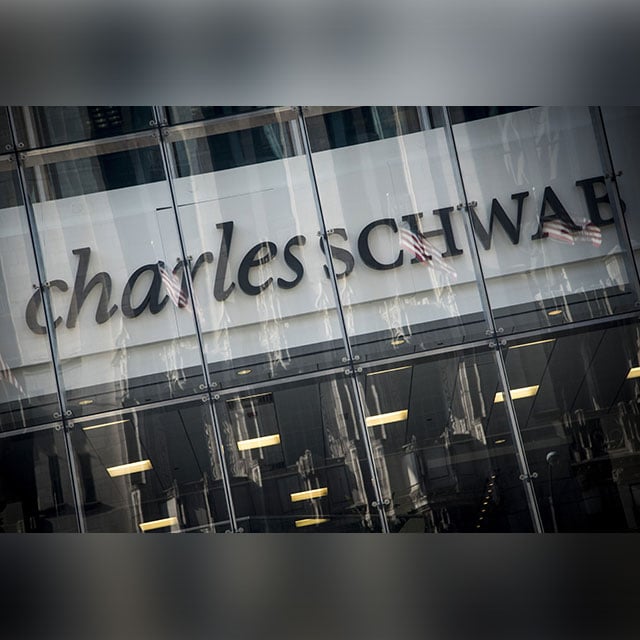
Charles Schwab saw a significant rise in new brokerage accounts in February — driven largely by a huge increase in trading influenced by social media, as well as ongoing trends and the addition of TD Ameritrade in October — according to Peter Crawford, the company's chief financial officer.
Schwab's core net new assets totaled $51.4 billion last month, it said Friday. Net new assets excluding mutual fund clearing totaled $50.3 billion.
Total client assets were $6.9 trillion at month's end, up 79% from February 2020 (due largely to the TD Ameritrade deal) and up 2% compared to January 2021, Schwab said.
Meanwhile, new brokerage accounts were 1.2 million in February, up more than 200% from February 2020 and up 11% compared to January 2021, it noted. The total number of active client accounts is now roughly 31.5 million.
Total assets in Advisory Services, Schwab's RIA business, grew to $2.9 trillion as of Feb. 28 — up 72% from a year ago (largely tied to the TD Ameritrade deal) and up 3% from Jan. 31.
Total assets in Investor Services' accounts owned by retail clients receiving ongoing advisory services from Schwab increased to $481.3 billion, a 49% increase from February 2020 and a 2% increase from January 2021.
"While retail trading activity overall has been increasing since Schwab helped lead the industry to $0 commissions in October 2019, the effects of work-from-home, technology-driven enhancements in access to information, and the increased convenience of stock-trading have further heightened investor engagement," he said in a commentary piece.
"Most recently, the added accelerant of social media-influenced trading has led to a massive surge in interactions for brokerage firms and helped push equity trading volumes to truly breathtaking heights — well beyond the pre-pandemic peak reached during the 2008 financial crisis," Crawford explained.
Plus, "given our size and reach, it's no surprise that Schwab — with the inclusion of TD Ameritrade — has seen engagement levels soar as clients utilize our broad array of products, solutions, and educational resources to meet their investing needs," he added.



